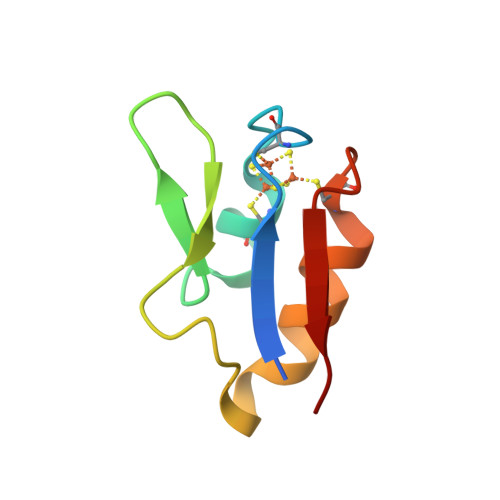The Polar Bear peninsula in Western Australia is one of the many places on this planet I never heard before. The reason I mention it now is that a new mineral named putnisite was discovered there, and this mineral caused a bit of a stir recently, for being “completely unique and unrelated to anything”. In fact, if you Google “Polar Bear peninsula”, all you find is putnisite.
In 2007, specimens of an unknown mineral forming purple crystals (a) were collected at the Polar Bear peninsula while prospecting for nickel and gold. The specimens were eventually forwarded to Peter Elliott, a research associate with the South Australian Museum, for examination.

|
| (a) |
|---|
Elliott et al. [2] report the composition and crystal structure of this unique mineral, named in honour of mineralogists Christine and Andrew Putnis of the Institut für Mineralogie, Universtität Münster, Germany. The compositional name for putnisite I come up with is “tetracalcium octachromium(3+) strontium octacarbonate hexadecahydroxide sulfate pentaicosahydrate”. Curiously, Mindat and Mineralienatlas give the molecular formula containing only 23 molecules of water.

|
| (b) |
|---|
The crystal structure (b) was determined from single-crystal X-ray diffraction data. Cr(OH)4O2 octahedra (red) link by edge-sharing to form an eight-membered ring. At the centre of each ring lies a decacoordinated Sr2+ cation (purple). The rings are decorated by carbonate triangles (green), each of which links by corner-sharing to two Cr(OH)4O2 octahedra. Rings are linked by Ca(H2O)4O4 polyhedra (blue) to form a sheet parallel to the (100) plane. Adjacent sheets are joined along the [100] direction by corner-sharing sulfate tetrahedra (yellow).
- Mills, R. (2014) New mineral shows nature’s infinite variability. Phys.org.
- Elliott, P., Giester, G., Rowe, R. and Pring, A. (2014) Putnisite, SrCa4Cr3+8(CO3)8SO4(OH)16·25H2O, a new mineral from Western Australia: description and crystal structure. Mineralogical Magazine 78, 131—144.








